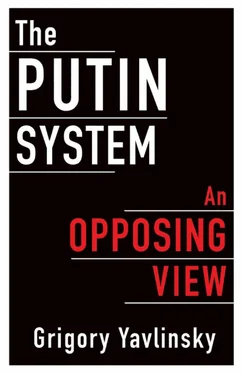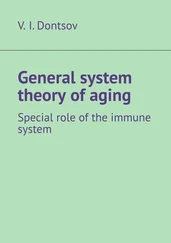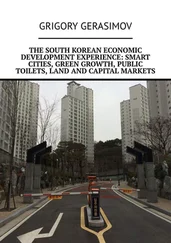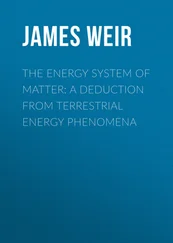The systems of the first, dynamic type are, virtually by definition, capable of reforming themselves in an evolutionary manner. This enables them to prevent, for relatively long periods of time, major societal upheavals and associated shocks. Most often, these are the kinds of regimes that, even if perhaps authoritarian, do not neglect the need for a dialogue and pursuit of workable compromise solutions in order to reconcile divergent interests and approaches within the political class. While the separation of powers and the institutions of parliamentary democracy are the most efficient tools for achieving such a compromise, they are not the only such instrument, and they are not irreplaceable.
Political systems of the second type, which are stagnation-prone or demodernizing, inevitably result in explosive social and political disturbances of a revolutionary type. Such political systems may provide an appearance—or, rather, an illusion—of stability for a relatively short time, yet they are unable to provide resolution to emerging tensions. Instead, these tensions keep piling up until their scale is practically no longer compatible with the regular functioning of the system’s institutions. At that point, they lead to a serious political crisis. The system may be able to postpone a resolution for the time being by treating the symptoms of the problem, either by populist campaigns or by suppressing dissent. If, however, this is not feasible, then the resolution of this crisis leads, in the best case, to the collapse of the political system and its replacement with a new one that is more fitted to the requirements of the moment. Or, in the worst case, the entire statehood in its prior form may collapse, in which case the new institutions of governance will have to be built from scratch, or even from a lower starting point.
The characteristics used in this classification of political systems also do not have any strict and uniform relationship with the extent to which a given system is either competition-based or authoritarian. In a specific situation at a given point in time, “democratic” models of political governance may turn out to be unable to meet the current challenges. And by not providing society with the means to initiate a radical (or seemingly radical) transformation, a democratic system may end up contributing to the development of a deep political crisis with long-term repercussions. To name just a few historical examples, this is what happened in Weimar Germany, in Chile and Argentina in the mid-1970s, and to some extent in present-day Greece, which has bogged down in a quagmire of multiple internal divisions and economic challenges.
Granted, authoritarian regimes are more often prone to failures of governance, and one could cite plenty of examples in Africa and in Latin America. And as a rule, such failed regimes tend to be replaced with other regimes of the same authoritarian type. Some of these new regimes manage to achieve impressive gains in the quality of governance and to tackle, at least in part, the problems that led to the crisis, but others turn out to be just as powerless as their predecessors, and it is just a matter of time before they go down as well.
Nevertheless, there are also examples of a different kind—regimes built along an authoritarian model yet managing to go, without much pain, through necessary changes that provide them with more flexibility, adaptability, and sophistication in their means of control. Not always, but in some of these cases, such changes results in a gradual “democratization,” that is, the expansion of the role of representative institutions; the erosion of the ruling group’s monopolistic control over the resources of governance, including its control over the institutions of coercion; the increase of the autonomy and the power of the judiciary; and the end to the use of law enforcement agencies for partisan political purposes. Such developments could be observed, for example, in Spain at the end of Francisco Franco’s rule, as well as in South Korea and several other autocracies in Asia. But, of course, there have been also examples of an opposite development—the decay of representative institutions and the transformation of competition-based political systems into authoritarian regimes of varying degrees of severity.
RUSSIA IN THE 1990S: THE “GOLDEN AGE” OF REFORMS?
Taking into account all that I have said thus far, let me start with an overview of Russia in the 1990s. It was then, in the wake of the abrupt collapse of Soviet statehood, and on the shaky ground of dysfunctional institutions and complete disorientation in the minds of Russia’s legislators and its law enforcement powers, that the political system of today’s Russia began taking shape.
Those who have forgotten those first post-Soviet years, or who were too young at the time to remember them, should be aware that the political system of the new Russia, as it was emerging on paper in 1991–1992, had no future from the outset. This was so even if we set aside the issue of how much of the actual control over the situation in the country was in the hands of Russia’s new authorities and even if we assume that the formally existing institutions were actually functioning and shaping the real situation in the country.
What looked, in the late 1980s, like the awakening of democracy (i.e., the establishment, one after another, of new institutions that appeared to be taking over the functions of deliberation and decision-making) did have its positive impact as a peaceful revolution of sorts. And yet, in the long term, it was not at all universally positive. The situation was rapidly becoming fraught with many legal and institutional conflicts, while a few of its important procedural aspects, related to the mechanisms of making and implementing decisions and of controlling their implementation, were rather vague.
It would take several pages to draw a list of all these conflicts and uncertainties. Let me mention just a few of them here. The Congress of People’s Deputies, Russia’s legislature at the time, had an ambiguous status as the highest authority in the country, with no institutional tools to exercise this authority. President Boris Yeltsin, on the other hand, was in control of virtually every practical policy tool, though he was legally constrained by the legislature, which could formally impose on him particular policies while bearing no responsibility for their feasibility. It was largely this ambiguity that, in 1993, resulted in the situation in which the legislature’s showdown with Yeltsin and his government over the president’s right to dissolve the legislature and hold fresh elections went beyond the framework of legally established procedures and put the country on the brink of a large-scale armed internal conflict. Moreover, within the government, the boundaries between the process of legislating and that of governing were extremely blurred, which led, at times, to complete uncertainty for the lower layers of the executive administration, for the judiciary, and for the armed agencies of the government.
In addition, the conspicuous weakness of the judiciary system and the lack of effective instruments for the implementation of its decisions resulted in virtually limitless opportunities for all kinds of power abuse, while making it impossible to use the courts as the adjudicator of disputes or as a disciplining power. It was already then, in 1992–1993, that the ruling circle began cultivating and encouraging an attitude of disregard for the law while replacing universally applicable, long-term, and legally binding norms with personalized, ad hoc, and temporary arrangements between government authorities and economic agents. The withdrawal of law enforcement agencies from the activities necessary to ensure compliance with business deals and contracts, along with the uncertainty about the rules of behavior that would ensure normal economic activities, complicated matters even more.
Читать дальше












